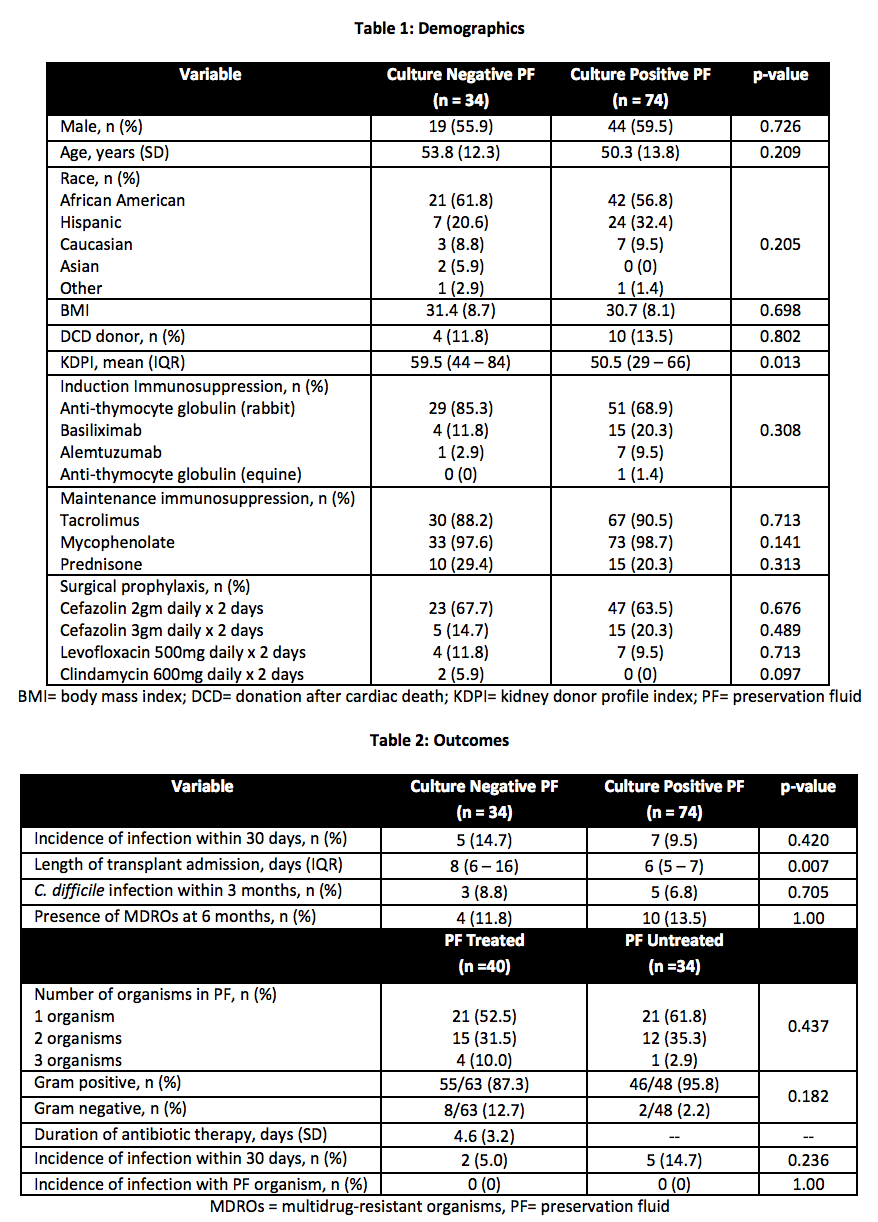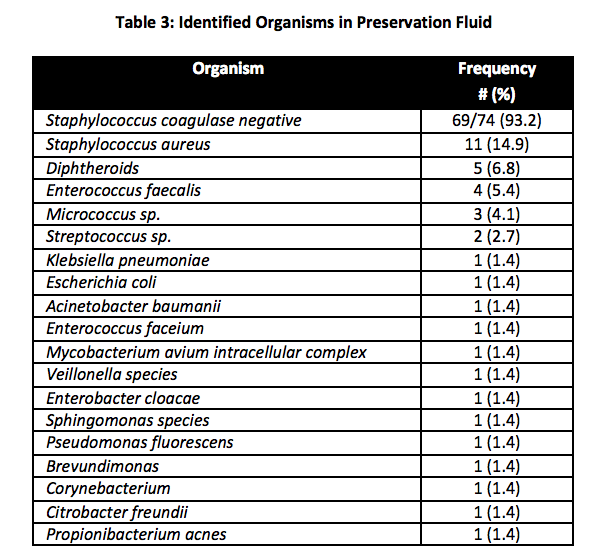The Significance and Impact of Screening Preservation Fluid Cultures in Renal Transplant Recipients
University of Illinois Hospital and Health Sciences System, Chicago, IL
Meeting: 2019 American Transplant Congress
Abstract number: B238
Keywords: Infection, Kidney transplantation, Preservation solutions
Session Information
Session Name: Poster Session B: Kidney Infections
Session Type: Poster Session
Date: Sunday, June 2, 2019
Session Time: 6:00pm-7:00pm
 Presentation Time: 6:00pm-7:00pm
Presentation Time: 6:00pm-7:00pm
Location: Hall C & D
*Purpose: Preservation fluid (PF) is necessary to maintain organ viability but serves as a vector for infection. The utility of routine PF screening and impact of culture-positive PF is controversial. This study aims to compare incidence of post-operative infection in patients with culture-positive PF versus those with culture-negative PF.
*Methods: Renal transplant recipients between 1/1/12 and 12/31/17 were retrospectively identified for analysis. The primary outcome assessed incidence of infection PF in patients with culture-positive PF compared to patients with culture-negative PF at 30 days post-transplant. Infection was considered related to PF if it was the same organism as the PF culture. Secondary outcomes included: infection rates in treated versus untreated culture-positive PF, distribution of organisms, antimicrobial use, duration of therapy, sequelae of PF treatment.
*Results: Results are preliminary as research is ongoing. A total of 108 patients were analyzed. Demographics were similar between groups (Table 1). There was no difference in the incidence of infection at 30 days post-transplant in patients with culture-positive PF or culture-negative PF (9.5% vs. 14.7%, p = 0.42, Table 2). There were no cases of infection related to PF regardless of whether culture-positive PF was treated or untreated. The incidence of C. difficile infection and multidrug-resistant organisms was similar. Of the organisms found in PF cultures, 75% were non-pathogenic, and coagulase-negative Staphylococcus was most common (Table 3). Fifty-four percent of culture-positive PF received antimicrobial treatment for an average duration of 4.6 days. Vancomycin and cefazolin were most commonly used for treatment.
*Conclusions: Culture-positive PF was primarily caused by coagulase-negative Staphylococcus which is often a contaminant and of low virulence. There was no difference in overall infection rates based on PF status, and subsequent infection related to PF did not occur regardless of PF treatment. This suggests antimicrobial treatment for culture-positive PF may be avoided with pathogens that are common contaminants and of low virulence. Interventional studies are needed to validate this strategy.
To cite this abstract in AMA style:
Reticker A, Lichvar A, Gross A, Benedetti E, Patel S. The Significance and Impact of Screening Preservation Fluid Cultures in Renal Transplant Recipients [abstract]. Am J Transplant. 2019; 19 (suppl 3). https://atcmeetingabstracts.com/abstract/the-significance-and-impact-of-screening-preservation-fluid-cultures-in-renal-transplant-recipients/. Accessed December 19, 2025.« Back to 2019 American Transplant Congress


